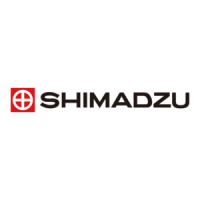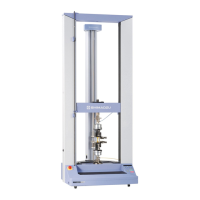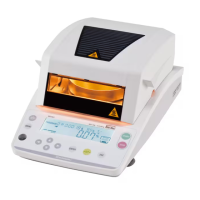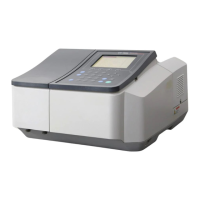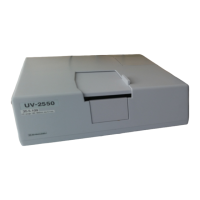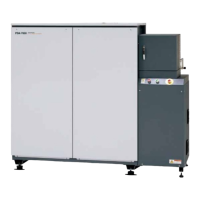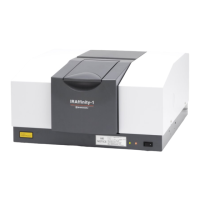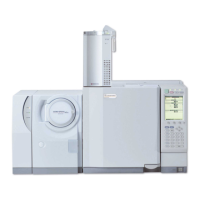The optimal background correction methods are installed as standard:
high-speed self-reversal method (SR method) and deuterium lamp method (D
2
method).
Dual-Background Correction Functions
SR (high-speed self-reversal) method –– accurate background correction over a wide range
Samples with a complex matrix
(Containing a large quantity of a specific element as the main component)
Purified water, tap water, environmental water, etc.
Samples with a relatively simple matrix
Samples suitable for the SR method Samples suitable for the D
2
method
These functions can correct for spectral interference in flame measurement.
Selecting the optimal background correction method for each sample ensures
accurate and reliable analysis results.
1. High-speed self-reversal (SR) correction is generally more accurate than deuterium lamp (D
2
) correction. As both atomic absorption and background
absorption can be measured using a single lamp, the correction errors due to light-axis misalignment are extremely small. This is ideal for the quantitation
of trace components in a matrix exhibiting complex background absorption, such as bio-samples and metals.
2. Permits background correction over the entire wavelength range from 185 nm to 900 nm.
3. This method can correct for spectral interference due to neighboring lines that can occur when a resonance line for another element exists near the
analytical line for the target element. (See table on next page.)
4. As no polarizer is used, measurements are possible with low light losses and a high S/N ratio.
5. The rapid lamp lighting permits accurate measurement unaffected by emission noise in the atomizer.
* Hollow cathode lamp L-2433 is required to use the SR method. Hollow cathode lamp L-2433 can also be used for the D
2
method.
Features
Principle
Background absorption
Background
Atomic absorption
Background
Atomic absorption
Time
Lamp current
IH spectrum
IH
IL
IL spectrum
(Lamp energy) (Sample measurement) (Energy component ratio)
Atomic
absorption
WavelengthWavelength
Atomic
absorption
Absorption
layer
A small current IL (approx. 10 mA) and a large current IH (approx. 500
mA) are alternately passed through the hollow cathode lamp. The
lamp emission spectrum when the large current flows has a depression
in the center (self-reverse), due to self-absorption of the large number
of sputtered atoms in the atom cloud, as shown in the diagram to the
left. No significant atomic absorption is apparent and background
absorption mainly occurs. Conversely, the lamp emission spectrum
when the small current flows comprises a single narrow peak resulting
from both atomic absorption and background absorption. By
determining the difference between the two types of absorption, it is
possible to accurately correct for the background absorption and
measure the true atomic absorption.
Examples suitable for SR method (where differences result between SR and D
2
methods)
Example: Measurement of trace levels of zinc in iron (analysis of Zn in Fe solution)
BGC-SR method
BGC-D
2
method
The identical 0.5 ppm Zn solution is accurately corrected to
the same absorbance at (2) and (6).
Due to inadequate correction, the absorbance is higher at
(6) than at (2) for the identical 0.5 ppm Zn solution.
Zn 0.25ppm
Zn 0.50ppm
Fe 0.1%
Fe 0.5%
Fe 0.5% Zn 0.25ppm
Fe 0.5% Zn 0.5ppm
Fe 0.75% Zn 0.3ppm
Atomic absorption signal
Background signal
14
Atomic absorption signal
Background signal

